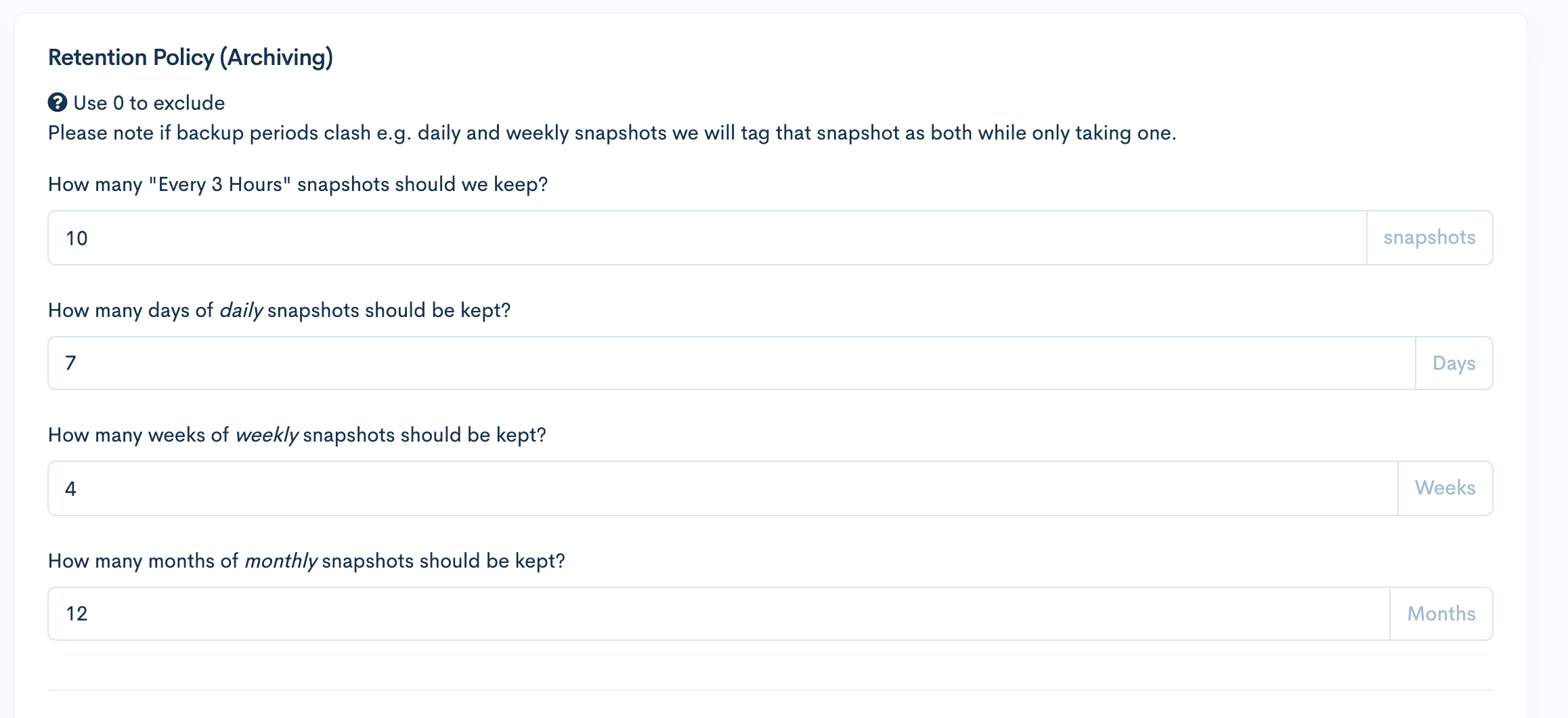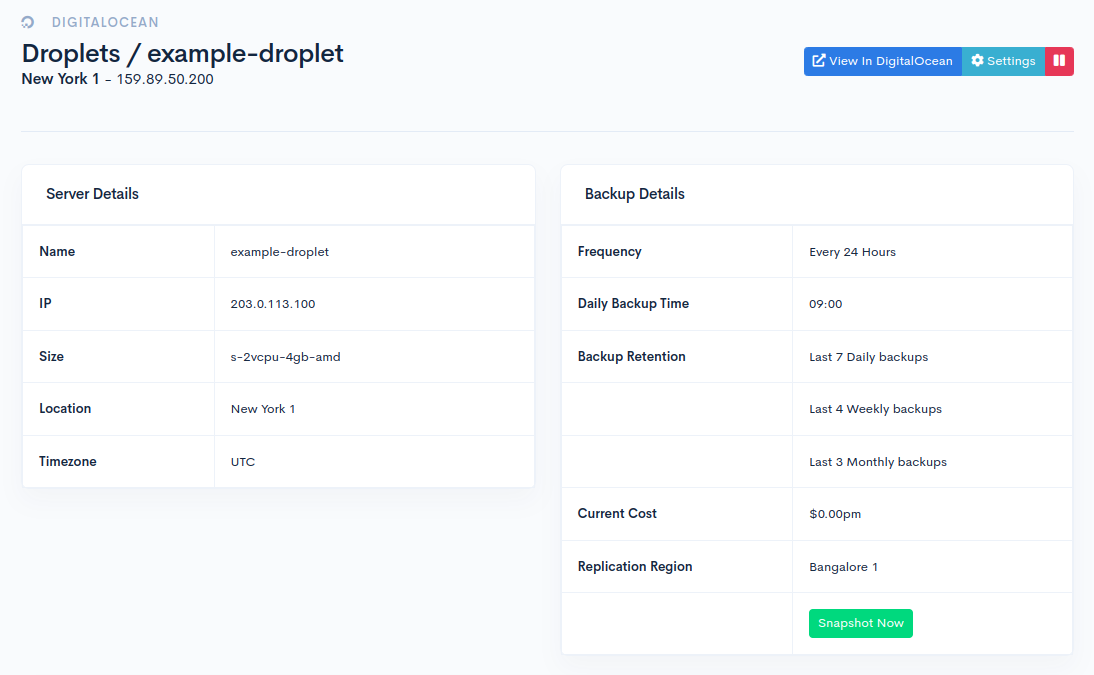How to Back Up DigitalOcean Droplets with SnapShooter
Validated on 26 Sep 2023 • Last edited on 9 Apr 2025
SnapShooter is a cloud backup and recovery solution. Use SnapShooter to back up servers, volumes, databases, and applications from DigitalOcean and other cloud providers.
Back up DigitalOcean Droplets daily with SnapShooter. SnapShooter uses the DigitalOcean API via OAuth authentication to take backups and prune them on your behalf.
Configure Automatic Droplet Backups
First, connect your DigitalOcean team to your SnapShooter account. Then, from the SnapShooter app, in the left menu under Snapshots, click DigitalOcean, then click Droplets.
Any Droplets on your team are visible in the Droplets section. When you initially connect your team, this appears as a list of Inactive Droplets, which means there are no backups configured for them. Droplets with SnapShooter backups enabled are listed under the Active tab.
To activate backups for a Droplet, click the Activate button to the right of the Droplet you want to back up to go to the configuration page.

Fill out the fields for backup frequency, backup time, and time zone.
After you fill out the fields, click Continue to go to the Retention Policy page.

When we take a backup, we tag them daily, weekly, and monthly. On this page, you can choose how many of each to keep. We recommend 7 days, 4 weeks, and 12 months respectively as a starting point.
Region replication lets you transfer your Droplet snapshots to a second region. If your plan supports region replication, you can choose from a list of regions to duplicate backups to.
Finally, click Start Backups.
After you set up automatic backups for a Droplet, you can view the status of the Droplet’s backups by clicking the Droplet in the Active tab. This page lists the following information:
- Server details, including its IP address and datacenter.
- Backup details, including it’s frequency, backup retention, and cost.
- Snapshots, which is a table of all completed backups with information on its status (completed or expired), the start time and duration, tags (manual, daily, weekly, or monthly), regions, and size. You can also manually delete snapshots here by clicking the Delete button.
Manually Back Up Droplets
You can manually back up any Droplets with automatic backups enabled.
From the SnapShooter app, in the left menu under Snapshots, click DigitalOcean, then click Droplets. Find the Droplet in the Active list and click View to go to the SnapShooter Droplet page.

On the SnapShooter Droplet page, in the Backup Details section, click Snapshot Now. This immediately starts a backup.